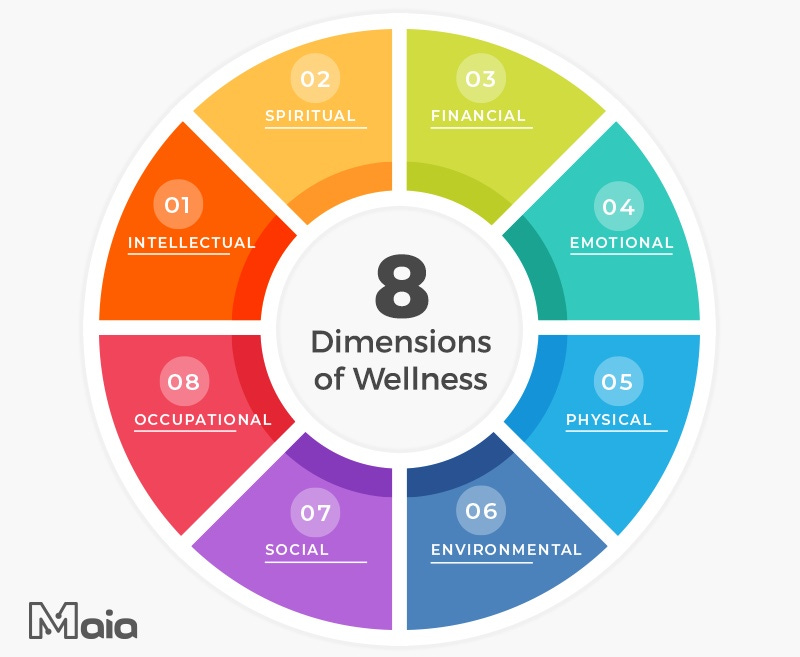Values vs Beliefs: Exploring the Blueprint of Our Behaviors
Part of the 360 Degrees of Change Series
Everything has a hand in shaping our journey to optimal health, from the world around us to the essence of who we are as individuals. This ongoing series will uncover the forces that help or hinder our quest to achieve our desired behaviors. Welcome to 360 Degrees of Change.
If you missed the first part of this sub-series on values and beliefs, check it out here. It lays the foundation for understanding how beliefs impact our health behaviors.
It may come as a surprise to learn that though they are related, and often interchangeably used in casual conversation, beliefs and values are not the same things. And like creating meaningful relationships with identical twins, it is wise to learn and honor their differences. Why is that? Because when it comes to changing our behaviors, a key to success is working with the power of beliefs in a way that does not inherently threaten values.
Transforming our beliefs
Beliefs are our truths, and they change over time.
An interesting thing about these truths is that they inspire behavior, even when they aren’t necessarily true! Say what? Yep, beliefs don’t have to actually be factual to inspire our behaviors.
Take for example the child who struggled to learn to read in their first few years of school and decided “I am a bad reader.” Because of this belief, they avoid reading assignments and reject the idea of “reading for pleasure.” Imagine their surprise years later when they receive standardized test scores that indicate they are actually quite proficient! As they hold their scores, they naturally confront the possibility that their long-held belief is not true, and better yet, they have an opportunity to rewrite a more empowering belief about themself. Maybe it looks something like this, “Well, I used to be a bad reader, but now I’m really good at it!”
Core values: Our steadfast guideposts
Values are broad guiding principles based on worthy things, concepts, and people. Some commonly held values include:
freedom
health
honesty
literacy
wisdom
Unlike beliefs, which are malleable and ever-changing, values typically stay the same. Think of values as the structure of your house, and beliefs as the decor. As our entire lives are built on our values, the idea of confronting them tends to be far too vulnerable. The good news is, we don’t typically need to confront or change our values to set ourselves up for successful behavior change.
The interplay between beliefs and values
To best understand the relationship between beliefs, values, and behavior, it’s easiest to look at a real world example. As I think about the steadfast nature of values and the chameleonic nature of beliefs, I can’t help but be reminded of my dad’s health journey through the 80s, 90s, and 10s.
Inspired by chronic pain and horrible side effects to the medications available at the time (mostly narcotics), in the early 80s, Pops sought help from a practitioner of eastern medicine. That doctor asserted that the pain was the result of inflammation (a relatively new idea at the time), and prescribed a special diet. What was special about the diet? Well, it required eliminating the inflammation trigger, ALL fat! Yep, all of it. Keep in mind, this was long before food labels supported such a behavior or special low fat and no fat foods were abundantly on the grocery shelves. Nevertheless, he made the change and was soon pain-free.
Nearly a decade later, new information about fat became relatively accessible. We learned that all fat was not the same, and it wasn’t all bad! We began to hear about HDL and LDL and that some fat is necessary for overall health. In response to this new information, Pops and his doctor agreed it was time to weave in healthy fats to his eating pattern. Fish and chicken were now on his plate and olive oil a welcome ingredient for his wife to use while making his meals.
The next change came in the early 2000s when Pops became borderline diabetic. The culprit? The latest research showed that all the added sugars in the many fat free and low fat products now readily available were causing new problems. Now it was time to curb the sugars.
In this example it’s easy to notice that Pops’ value, good health, never changed over the years. However, his beliefs about how to gain and support good health changed as his needs and the latest research changed.
Examine the evolution of your beliefs and values
Choose a particular value within a dimension of wellness, and think about how your beliefs within that area have evolved over time.
As you reflect on the past few decades of your life, what belief changes that you experienced are most evident?
Did your value/s ever waiver?
What inspired your beliefs to change?
How did the change in beliefs impact your behavior?
Let others’ beliefs inspire you
Just for fun, explore thousands of people’s 500-600 word essays on ThisIBelieve.org
This I Believe is based on a 1950s radio program of the same name, hosted by acclaimed journalist Edward R. Murrow. Each day, Americans gathered by their radios to hear compelling essays from the likes of Eleanor Roosevelt, Jackie Robinson, Helen Keller, and Harry Truman as well as corporate leaders, cab drivers, scientists, and secretaries—anyone able to distill into a few minutes the guiding principles by which they lived.
Up next…
Exploring the power of other people’s beliefs on our own!





